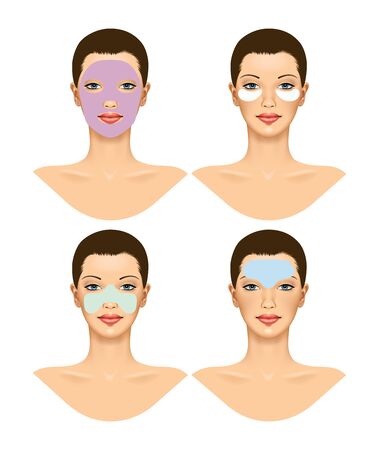Introduction to Muscle Sculpting in the UK
In recent years, muscle sculpting and body contouring have gained remarkable popularity across the United Kingdom, becoming a defining trend in the nation’s approach to personal aesthetics and wellness. The evolution of these techniques is deeply intertwined with modern British lifestyles, which are increasingly influenced by fast-paced routines, social media trends, and a collective desire for self-confidence. As more people seek ways to achieve their ideal physique without extensive downtime or invasive procedures, the demand for advanced body contouring solutions has surged. This movement reflects not only changing beauty standards but also a broader cultural shift towards proactive health and body positivity. With British society embracing both traditional fitness and innovative technologies, muscle sculpting has emerged as a symbol of empowerment—encouraging individuals to take control of their appearance in ways that align with contemporary values and aspirations.
2. From Traditional Methods to Modern Solutions
For decades, the pursuit of a sculpted physique in the UK was closely linked with conventional fitness routines and hands-on techniques. Think early morning jogs in Hyde Park, rigorous weight training at your local gym, or even classic home workouts championed by generations past. While these methods have built a foundation for healthy living and self-discipline, they often required significant time investment and yielded gradual results. As British lifestyles became busier and wellness goals more personalised, the demand for quicker, more tailored solutions grew.
The Shift: Embracing Advanced Technologies
In recent years, the UK has witnessed a remarkable transformation in muscle sculpting options. The arrival of non-invasive and minimally invasive technologies has provided new opportunities for those seeking body contouring without the extended downtime or risks associated with traditional surgery. These advanced methods harness science-backed innovations—ranging from electromagnetic stimulation to fat-freezing—to deliver targeted results in less time.
Comparing Traditional & Modern Approaches
| Method | Typical Approach | Time Commitment | Results |
|---|---|---|---|
| Conventional Fitness | Exercise & Diet | Ongoing/Long-Term | Gradual, Whole-Body |
| Manual Sculpting (e.g., Massage) | Physical Manipulation | Multiple Sessions | Mild/Temporary Enhancement |
| Non-Invasive Tech (e.g., EMSculpt) | Electromagnetic Stimulation | 30 min/session; few sessions needed | Toned Muscles, Visible Definition |
| Minimally Invasive (e.g., Fat-Freezing) | Cryolipolysis/Other Tech | Short Sessions; Minimal Recovery | Targeted Fat Reduction, Contouring |
A New Era of Confidence
This evolution reflects a broader cultural shift across the UK—one that values both health and convenience. Whether you are seeking subtle definition or a more dramatic transformation, today’s technologies offer a supportive pathway towards your goals. By blending scientific innovation with personal empowerment, modern body contouring honours your commitment while respecting your lifestyle.
![]()
3. Breakthrough Technologies Shaping the Market
The UK’s approach to body contouring has been thoroughly transformed by a wave of cutting-edge technologies that have redefined what’s possible for muscle sculpting and fat reduction. British clinics now offer a diverse range of non-surgical options, making advanced body shaping accessible, comfortable, and highly effective for more people than ever before. Among the most noteworthy breakthroughs is electromagnetic muscle stimulation (EMS), which has quickly become a favourite in London and beyond. Devices like Emsculpt use high-intensity focused electromagnetic energy to induce powerful muscle contractions, building tone and strength while simultaneously burning fat. Clients across the UK praise these treatments for delivering visible results with no downtime – a true game changer for those juggling busy city lifestyles.
Cryolipolysis, better known as “fat freezing” or under brand names like CoolSculpting, has also cemented its status as a staple in British body contouring clinics. This innovative technique targets stubborn fat pockets by cooling fat cells to a temperature that safely destroys them, all without harming surrounding tissue. The appeal lies not just in its effectiveness but in the gentle, non-invasive nature of the procedure – something that resonates deeply with UK clients who prioritise safety and subtlety over dramatic surgical changes.
Alongside EMS and cryolipolysis, other technological advancements have made significant waves across the UK market. Radiofrequency-based treatments are increasingly popular for their dual action: tightening skin while reducing fat. Ultrasound cavitation offers another needle-free route to smoother contours, breaking down fat cells using sound waves. The synergy between these technologies means British clinics can offer truly bespoke programmes tailored to individual goals, whether it’s chiselling the abdomen or refining the arms and thighs.
This surge of innovation reflects the UK’s discerning standards for quality, comfort, and natural-looking results. As new devices continue to emerge and evolve, British clients remain at the forefront of safe, science-backed solutions – embracing technology that empowers them to look and feel their best with confidence.
4. The Role of Regulatory Standards
One of the defining factors behind the evolution of muscle sculpting technologies in the UK is the country’s robust approach to regulation. Unlike some regions where cosmetic procedures might fall into grey areas, the UK has established a clear framework that ensures both safety and efficacy for all body contouring treatments. This commitment is not just about paperwork—it’s about protecting clients and upholding industry standards.
The Medicines and Healthcare products Regulatory Agency (MHRA) oversees the approval and monitoring of medical devices, including those used in muscle sculpting. Additionally, the Care Quality Commission (CQC) regulates clinics offering surgical or advanced non-surgical cosmetic procedures. These agencies work together to make sure that treatments are delivered by qualified practitioners using approved devices. Here’s a quick breakdown of how key regulations impact muscle sculpting:
| Regulatory Body | Role in Muscle Sculpting |
|---|---|
| MHRA | Approves and monitors safety and performance of medical devices |
| CQC | Inspects and regulates clinics to ensure high standards of care |
| General Medical Council (GMC) | Sets standards for practitioner qualifications and professional conduct |
| Advertising Standards Authority (ASA) | Monitors marketing claims to prevent misleading information |
This strict regulatory oversight means that individuals seeking muscle sculpting treatments in the UK can feel confident about their choices. Clinics must adhere to rigorous protocols, ensuring each client’s wellbeing is prioritised at every stage—from initial consultation through to aftercare. Such measures have not only fostered trust but also driven innovation, as manufacturers strive to develop technologies that meet these high benchmarks.
5. Cultural Impact and Public Perception
As muscle sculpting technologies have evolved in the UK, so too have cultural attitudes towards body image, wellness, and cosmetic enhancement. Traditionally, British society has valued modesty and a certain understated approach to appearance, with open discussion of cosmetic procedures often viewed as taboo. However, the rise of innovative body contouring solutions—ranging from non-invasive treatments to advanced muscle stimulation devices—has contributed to a gradual shift in public perception.
Increasingly, Britons are embracing a holistic view of wellness that incorporates both physical health and self-confidence. Muscle sculpting is now seen not merely as a cosmetic luxury but as part of an overall commitment to wellbeing. This change is especially evident among younger generations, who are more likely to discuss body goals openly and seek out technological solutions to support their lifestyle aspirations.
Shifting Attitudes Towards Body Image
The growing popularity of muscle contouring treatments reflects a broader acceptance of diverse body types and individualised beauty standards. Rather than pursuing unrealistic ideals, many people in the UK are focusing on personal empowerment and incremental improvements that enhance their natural physique. The narrative has shifted from drastic transformations to subtle enhancements that complement one’s unique features.
The Role of Technology in Normalising Cosmetic Enhancement
Advances in technology have played a crucial role in demystifying cosmetic procedures. Non-surgical options with minimal downtime have made muscle sculpting accessible to a wider audience, reducing stigma and encouraging more open conversation around treatment choices. Clinics across the UK now emphasise safety, transparency, and ethical practice—factors that resonate strongly with the British public’s cautious yet curious approach.
The Influence of Media and Social Platforms
Media representation and social media influencers have also contributed significantly to changing perceptions. By sharing authentic experiences and results, they have helped normalise muscle sculpting as part of mainstream self-care routines. This visibility empowers individuals to make informed decisions while feeling supported by a community that values confidence over conformity.
Ultimately, the evolution of muscle sculpting technologies has not only transformed physical possibilities but also fostered a more open-minded and supportive cultural climate in the UK. As advancements continue, it is clear that British attitudes will keep evolving—encouraging everyone to embrace their best selves with pride and authenticity.
6. The Future of Body Contouring in the UK
As we look ahead, the landscape of body contouring in the UK is poised for remarkable transformation. With technology advancing at breakneck speed and British attitudes towards self-care evolving, the next decade promises exciting developments for muscle sculpting enthusiasts.
Emerging Technologies and Innovations
Future muscle sculpting is likely to be shaped by even more refined non-invasive solutions. We can expect devices that combine AI-driven personalisation with cutting-edge energy-based technologies, delivering tailored results with minimal discomfort or downtime. British consumers are savvy and value efficacy, so manufacturers are focusing on smarter, safer, and more precise treatments that fit seamlessly into busy lifestyles.
Changing Consumer Preferences
The UK’s relationship with body image is shifting towards empowerment and authenticity. Increasingly, people seek subtle, natural-looking enhancements rather than dramatic transformations. There’s a growing emphasis on holistic wellness—where muscle tone, confidence, and mental health go hand in hand. Clinics are already responding by integrating complementary services such as nutritional guidance and stress management alongside body contouring treatments.
Sustainability and Ethical Practices
British consumers are also becoming more eco-conscious. Over the next decade, expect a greater demand for sustainable practices within the aesthetics industry—everything from biodegradable consumables to cruelty-free product lines. Ethical considerations will likely play a bigger role in both consumer choices and regulatory frameworks.
The Role of Regulation and Safety Standards
With innovation comes responsibility. Regulatory bodies in the UK are expected to introduce even stricter safety standards to protect clients as new technologies emerge. This focus on quality assurance will further cement the UK’s reputation as a leader in safe, effective aesthetic care.
In summary, the future of body contouring across Britain looks bright: driven by technological leaps, changing values, and a steadfast commitment to safety and sustainability. If you’re considering muscle sculpting, now is a wonderful time to explore your options—confident that this ever-evolving field will continue putting your well-being first.


